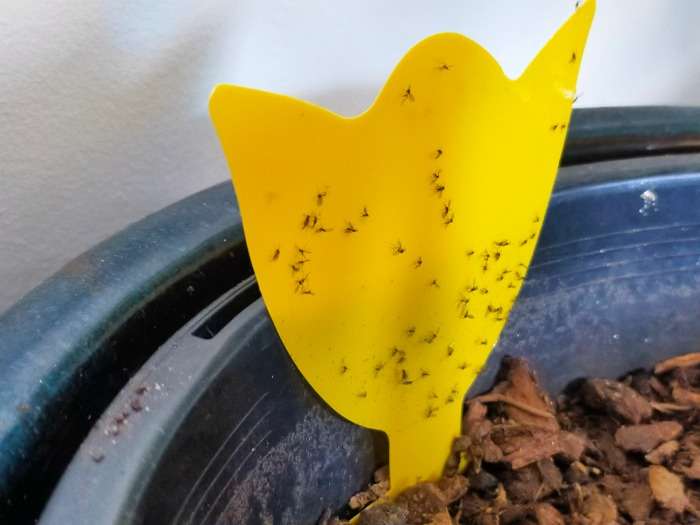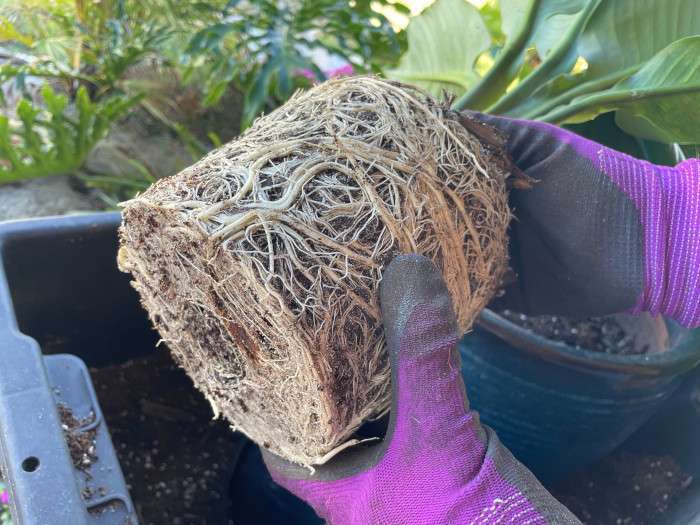“More Leafy Moments” is the namesake of this blog, and if you’re like me, you enjoy having plants inside. However, caring for indoor plants can sometimes be a hassle, and they can be a lot more finicky than outdoor plants.
The good news is, there are hardy, low-maintenance plants that thrive even when life gets busy—or when you simply want a more hands-off approach.
Today, I’d like to share some of the easiest plants to care for, whether you’re just starting with indoor plants or have a hectic schedule. These plants are perfect for minimal effort and maximum enjoyment.
1. Zamioculcas zamiifolia ‘ZZ Plant’

You’ll often find the ZZ Plant on lists of easy-to-care-for indoor plants—and for good reason. I sometimes forget I have this plant, yet every time I come across it, it looks just as healthy as the day I got it.
The ZZ Plant is known for its glossy, dark green leaves and its ability to thrive in low light and withstand infrequent watering. In my experience, it thrives even in dark corners where nothing else can, and I’ve never had any issues with pests or wilting leaves. That’s why I’m giving this plant the top spot on this list.
Care: Thrives in low light and with infrequent watering.
Propagation: Can be propagated through leaf cuttings or division.
Toxicity: Toxic to people but less so to pets.
2. Chamaedorea elegans ‘Parlour Palm’
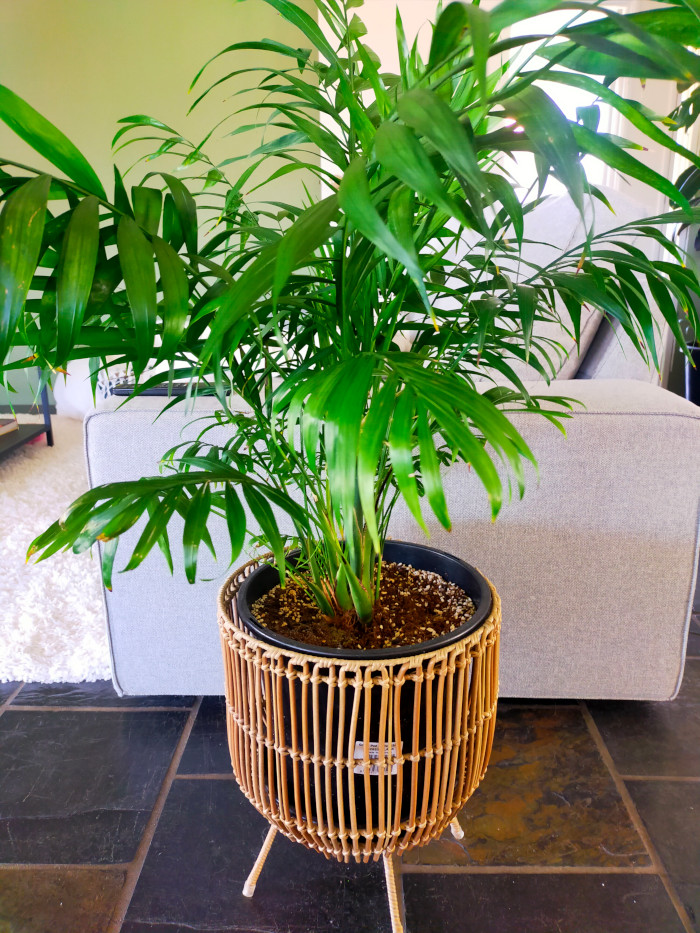
I’m a big fan of palms, and the parlour palm is one of the easiest to grow. It thrives in low light conditions much better than many other plants and can grow quite large if you want something to fill out some space. While its growth rate is generally slow, it won’t outgrow its space quickly and remains manageable.
Care: Tolerant of low light, requires infrequent watering, and is resistant to pests and diseases.
Propagation: Can be propagated through division which I’ve done several times.
Toxicity: Non-toxic to pets and people.
3. Epipremnum aureum “Devils Ivy”

Devil’s Ivy, is a versatile and low-maintenance plant that’s perfect for both beginners and seasoned indoor gardeners. Renowned for its trailing vines and heart-shaped leaves, it can add a lush, green touch to any space.
Care: Thrives in a variety of light conditions, from low light to bright, indirect light. The brighter the light you give it, the stronger the variegation will be. For a detailed care guide, check out my full post on Devil’s Ivy.
Propagation: Easily propagated through cuttings.
Toxicity: Toxic to pets and people.
4. Ficus elastica ‘Rubber Plant’
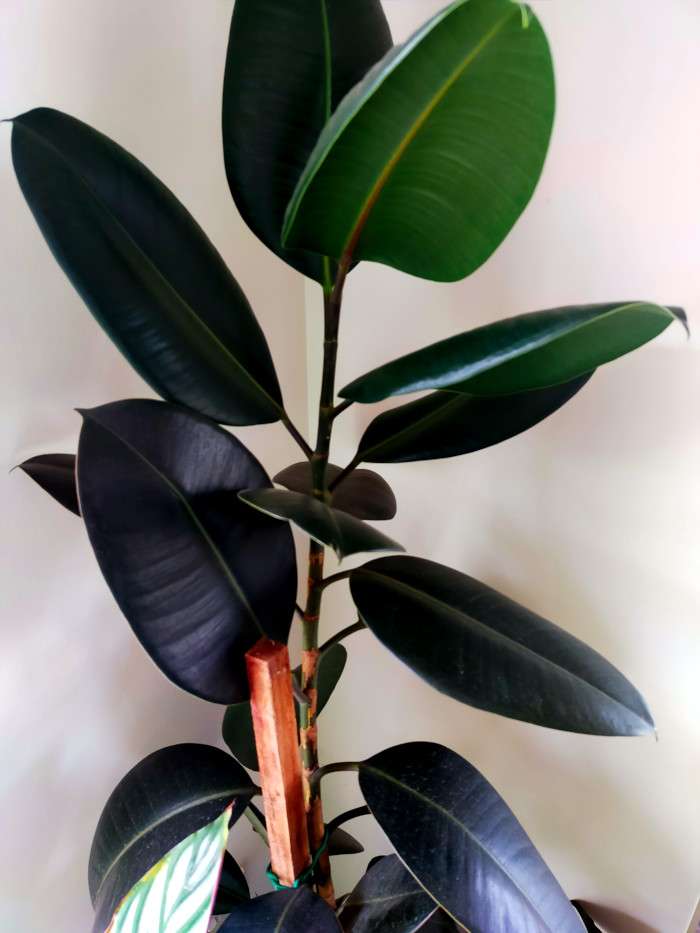
Sought after for its large, glossy leaves, it adds a bold touch to any room and can make a great feature plant. It has a very aggressive root system and can grow to enormous sizes so it’s a good choice to keep in a pot.
I find the Burgundy in particular very tolerant of low light conditions and never has any pest issues.
Care: Thrives in bright, indirect light and requires minimal watering. Will tolerate soggy feet much better than other plants.
Propagation: Easily propagated through cuttings.
Toxicity: The sap is sticky and toxic to people and animals. Use gloves when handling.
5. Dracaena ‘Cintho’
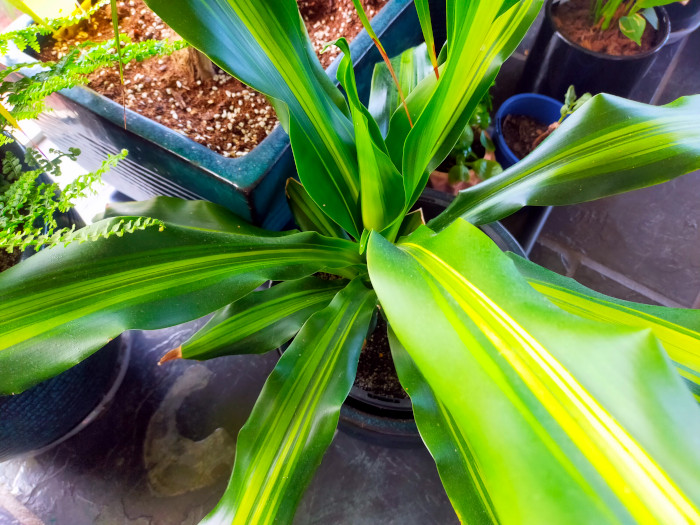
Dracaena ‘Cintho’ is a very hardy and low-maintenance plant like many from the same family. I like the Cintho for its large leaves with interesting textures. It’s slow-growing, so it won’t need much fertilizing, and won’t outgrow its spot anytime soon.
Care: Thrives in bright, indirect light and is very drought-tolerant.
Propagation: Can be propagated through cuttings.
Toxicity: Toxic to cats and dogs.
6. Monstera deliciosa ‘Swiss Cheese Plant’
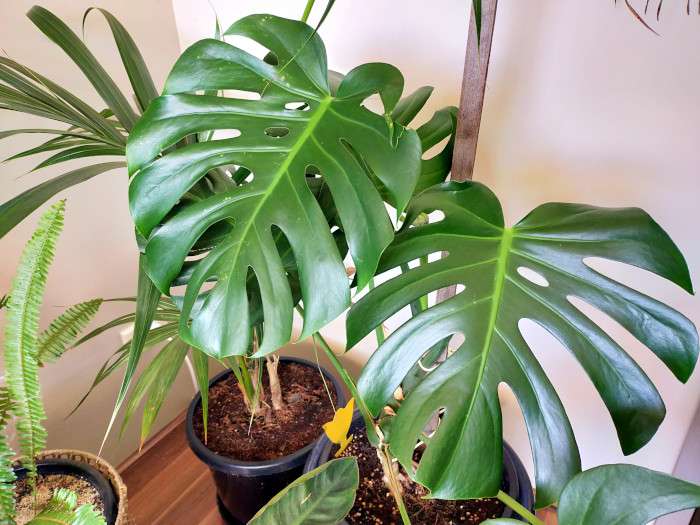
Monstera deliciosa, commonly known as the Swiss Cheese Plant, is a classic indoor houseplant famous for its large, distinctive leaves with unique holes and textures. Its low-maintenance nature and striking appearance make it a favourite among plant enthusiasts.
I probably have about 15 of these plants from propagation, and I find them incredibly easy to care for. They’re also highly resistant to pests and diseases.
Care: Prefers bright, indirect light for the best leaf growth. It’s more tolerant of soggy soil than many other indoor plants.
Propagation: Easily propagated through cuttings.
Toxicity: Toxic to both pets and people.
7. Strelitzia nicolai ‘Giant Bird of Paradise’

Perfect for indoors or outside, the Giant Bird of Paradise is a classic thriller plant along with the similar Strelitzia reginae or Bird of Paradise. The large, unique leaves and striking growing habit make it a great feature plant. It looks great on its own if you have limited room or just want a nice specimen plant.
Care: Tolerates drying out and is quite resilient to various conditions. It will require an area with very bright light if you want good-sized leaves.
Propagation: Can be propagated through division.
Toxicity: Generally non-toxic but best to keep away from pets and small children.
8. Nephrolepis obliterata ‘Emerald Queen’
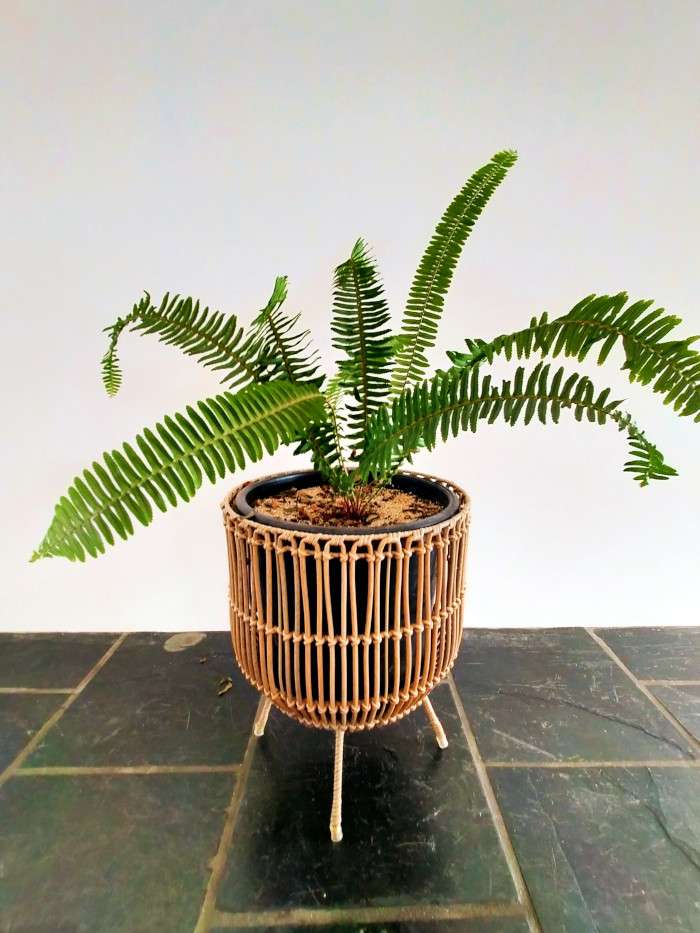
Ferns tend to be some of the more finicky plants to keep indoors, but if you like them and want to have some indoors then I recommend the Emerald Queen Fern. I find its quite hardy compared to other ferns I keep.
If you don’t have access to this particular variety, the Nephrolepis exaltata, also known as the Boston Fern, can be used as a substitute, offering a similar effect with its lush foliage and cascading fronds.
Care: Prefers bright, indirect light and consistently moist soil. It’s not as fussy and can tolerate a variety of conditions well.
Propagation: Very easy to propagate through its runners.
Toxicity: Non-toxic to pets and people.
9. Aspidistra elatior ‘Cast Iron Plant’
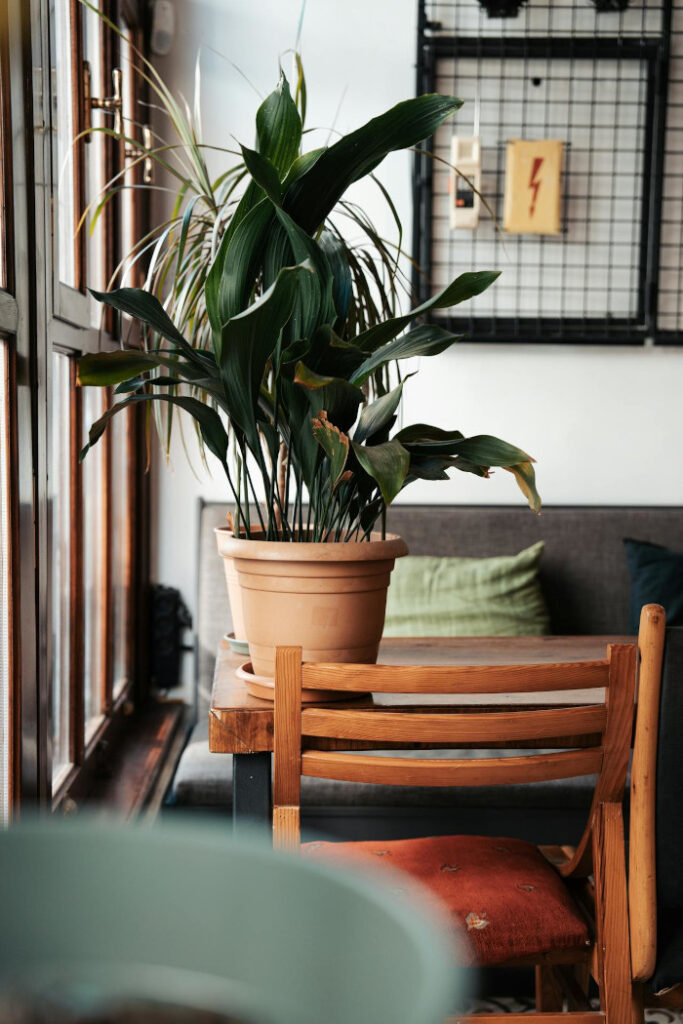
The Cast Iron Plant is known for its hardiness and ability to thrive in less-than-ideal conditions. It’s definitely a shade-tolerant plant, making it perfect for low-light areas. However, like any plant, it will benefit from the best care you can provide to keep it healthy and looking its best.
Care: Prefers bright, indirect light but can tolerate lower light conditions. Infrequent watering is best.
Propagation: Can be propagated through division.
Toxicity: Toxic if ingested, so keep away from pets and small children.
10. Calathea majestica ‘Exotica’

One of my favourite plants, Its large, oval leaves feature interesting shades of green with silver and purple markings, bring a nice exotic touch to any space.
Calatheas have a reputation for being finicky, but I’ve found this cultivar surprisingly resilient. To avoid brown tips on the leaves, use filtered water or let tap water sit out for 24 hours to dechlorinate before watering.
If you happen to damage it, don’t worry—it will quickly regrow, making it a great choice for beginners or busy people.
Care: Prefers bright, indirect light and consistently moist soil.
Propagation: Can be propagated through division.
Toxicity: Non-toxic to pets and people.
The Importance of Good Potting Soil
While these plants are generally low-maintenance, having a good quality indoor plant soil will go a long way in keeping your plants healthy and reducing the work you need to put in. Here’s why it’s important:
- Nutrient Supply: Plants absorb nutrients from the soil to grow and stay healthy. Using a high-quality potting mix ensures that your plants get the essential nutrients they need.
- Proper Drainage: Overwatering is a common issue that can lead to root rot. A well-draining soil mix prevents water from sitting in the pot, protecting the plant’s roots.
- Aeration: A good potting mix is loose and well-aerated, allowing oxygen to reach the roots. This is vital for the plant’s metabolic processes and overall vitality.
If you’re struggling to maintain your plant, repotting and changing the potting soil could help.
When selecting potting soil, choose a mix that suits your plant’s specific needs. For instance, succulents prefer a sandy, well-draining mix, while many tropical plants thrive in richer, more organic soil. You can even create your own potting mix to better suit your plant’s needs and conditions, which can be more cost-effective than purchasing premium mixes.
Conclusion
It’s possible to enjoy plants in your home without too much of a hassle to look after them. Remember, while these plants are relatively easy to care for, they still benefit from good-quality potting soil and usually bright, indirect light.
The easiest way to maintain a plant is to give it good conditions in the first place, like using well-draining soil. Otherwise, you’ll often find yourself fighting a constant losing battle.
Practicing good watering habits will also help prevent fungus gnats from becoming a nuisance in your home.
